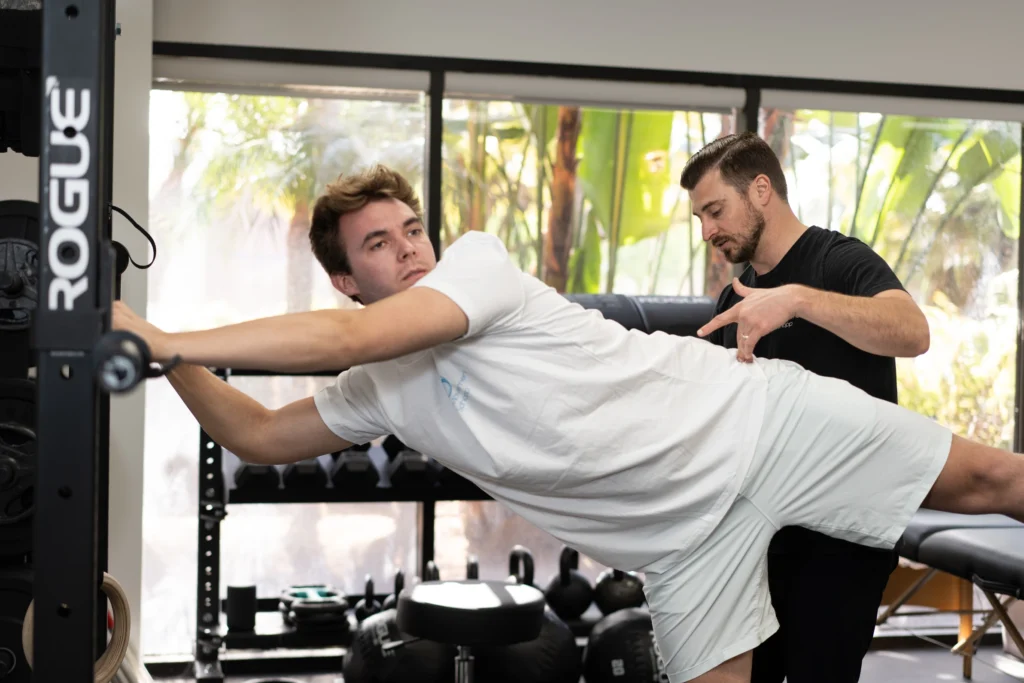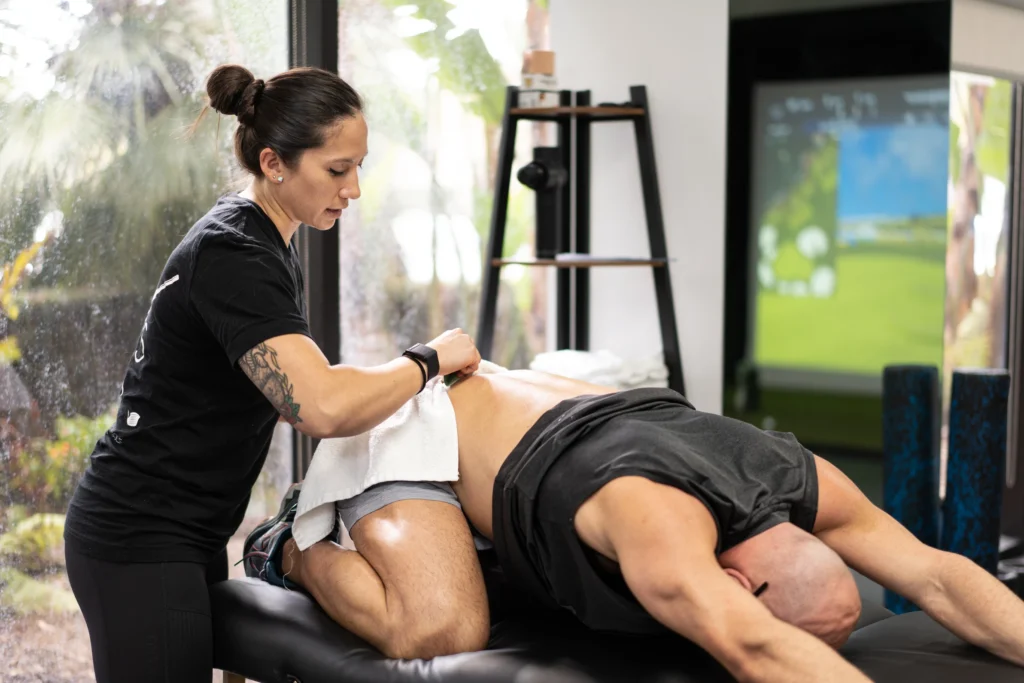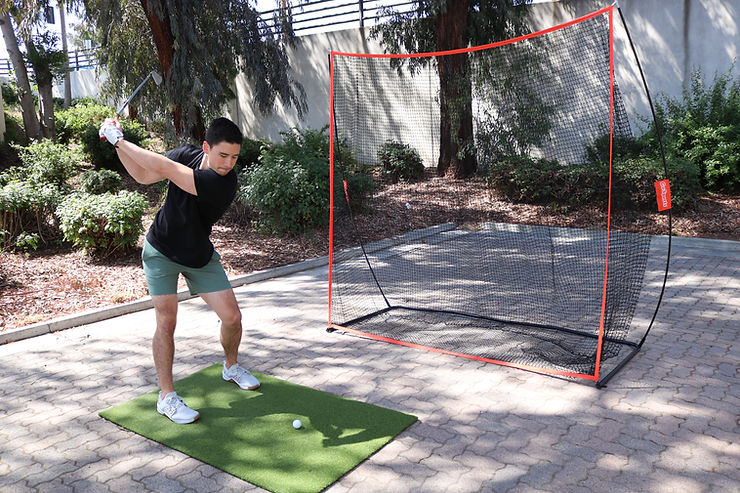Introduction
Welcome to the world of CrossFit, where the intensity of workouts meets the quest for ultimate fitness. In exploring CrossFit’s benefits and potential drawbacks, a crucial question emerges – is lower back pain from CrossFit a valid concern?
In this article, we will discuss the causes of back pain from CrossFit, ways to prevent it, effective stretches, and the role of back pain physical therapy in addressing it.
Is CrossFit bad for you?
In 2000, a fitness movement took root in Santa Cruz, California. This fitness methodology originated in the garage of Greg Glassman, evolving over the next 15 years into a global phenomenon with thousands of gyms worldwide and millions of participants.
CrossFit involves engaging in a diverse range of functional fitness activities at high-intensity levels. It has become a fitness trend, but it’s not without its controversies. Critics often highlight concerns that revolve around its unique approach to training.
Arguments For CrossFit
- Supporters argue that the intensity and variety of CrossFit workouts can lead to efficient and holistic fitness gains.
- The emphasis on functional movements and constantly varied exercises can improve cardiovascular health, strength, and endurance.
Arguments Against CrossFit
- On the flip side, critics express apprehensions about the potential risks associated with the intensity of CrossFit routines, questioning why CrossFit is considered bad by highlighting concerns about potential health risks and injury rates.
- CrossFit uses different workout programs with varying levels of intensity and timing. High-intensity exercises, if not approached with caution and proper form, might lead to a higher risk of injury.
- Lower back pain from CrossFit is one such concern, often attributed to improper techniques or overexertion during workouts.
Impact on Well-being
- The debate surrounding CrossFit’s impact on well-being centers on finding a balance.
- While it can provide unparalleled results over a period of time, the risk of injuries, especially in the lower back, raises valid concerns.
- Understanding your body’s limits and adopting a mindful approach to CrossFit can be crucial in navigating the potential pitfalls and maximizing the benefits of this popular fitness regimen.
Causes Of Back Pain From Crossfit
Understanding the factors that cause back pain from CrossFit is essential for enthusiasts to enjoy the benefits of the sport while minimizing the risks.
Dynamic and Varied Movements: CrossFit is renowned for its dynamic and varied exercises, ranging from Olympic lifts to gymnastics, but it also introduces a potential for strain.
Focus on Lower Back: Exercises like deadlifts and kettlebell swings heavily engage the lower back muscles, making them susceptible to strain if not executed with proper form.
Overexertion and Improper Techniques: The intensity of CrossFit can sometimes lead enthusiasts to push beyond their limits, sacrificing proper techniques, especially when dealing with heavy weights.
Lack of Rest and Recovery: Without sufficient rest and recovery, the lower back muscles may not have adequate time to repair, increasing the likelihood of strain, especially after engaging in complex movements.
Inadequate Warm-up: The body needs preparation, especially the lower back muscles, for dynamic movements, like CrossFit stretches, particularly prior to high-intensity interval training.
How to Prevent it?
Embrace Proper Form: Cultivate proper form in CrossFit exercises, especially those engaging the lower back and core muscles, minimizing the risk of strain.
Gradual Progression: Progress gradually in your CrossFit journey, mastering basic movements before attempting advanced exercises to allow your lower back to adapt and build essential core stability.
Personalized Modifications: Tailor CrossFit workouts to your fitness level and unique body, implementing personalized modifications to reduce strain on the lower back and minimize the risk of injury rate.
Mindful Approach: Adopt a mindful approach, paying attention to your body’s signals, and modify workouts accordingly to prevent overexertion and potential back pain.
Regular Mobility Work: Prioritize regular mobility exercises to enhance flexibility and reduce stiffness in the lower back, incorporating stretches into your warm-up and cooldown.
Here Are 7 Stretches That Can Help Prevent Back Pain in Crossfit
Incorporating stretches into your routine can be a game-changer. Here are seven stretches, including the effective static stretch, specifically designed to target the areas prone to strain during CrossFit.
- Cat-Cow Stretch
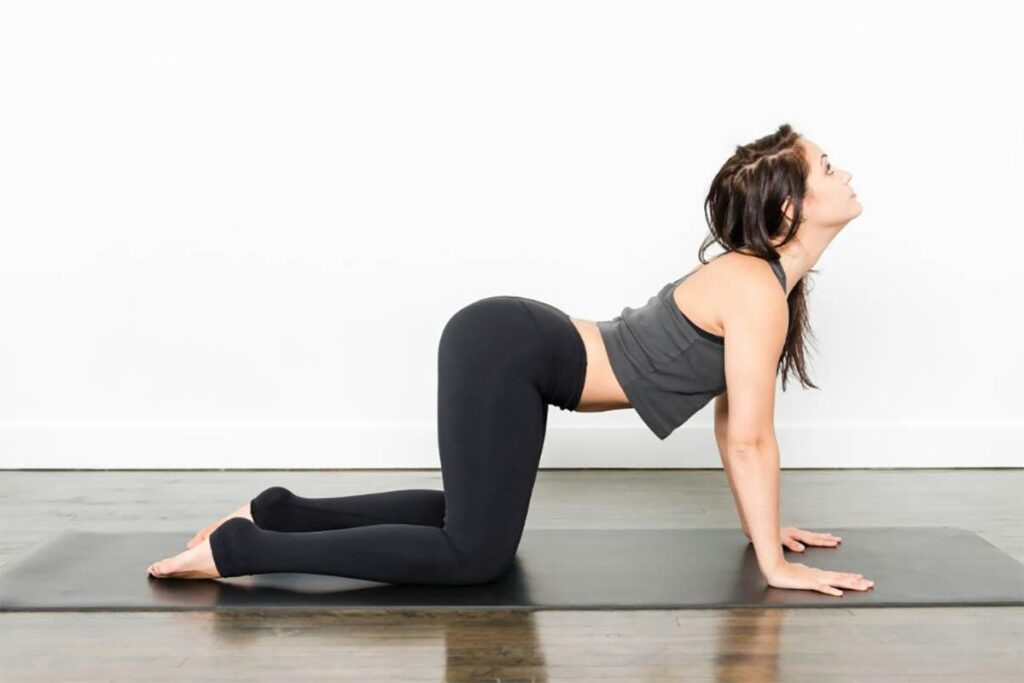
Engage your spine by moving between arching (cat) and rounding (cow) positions. This dynamic stretch promotes flexibility and reduces tension, which is particularly beneficial for the back.
- Child’s Pose:

Relax and stretch your lower back by kneeling on the floor, sitting back on your heels, and reaching your arms forward. This comforting pose is restorative and helps alleviate lower back stress.
- Hamstring Stretch:
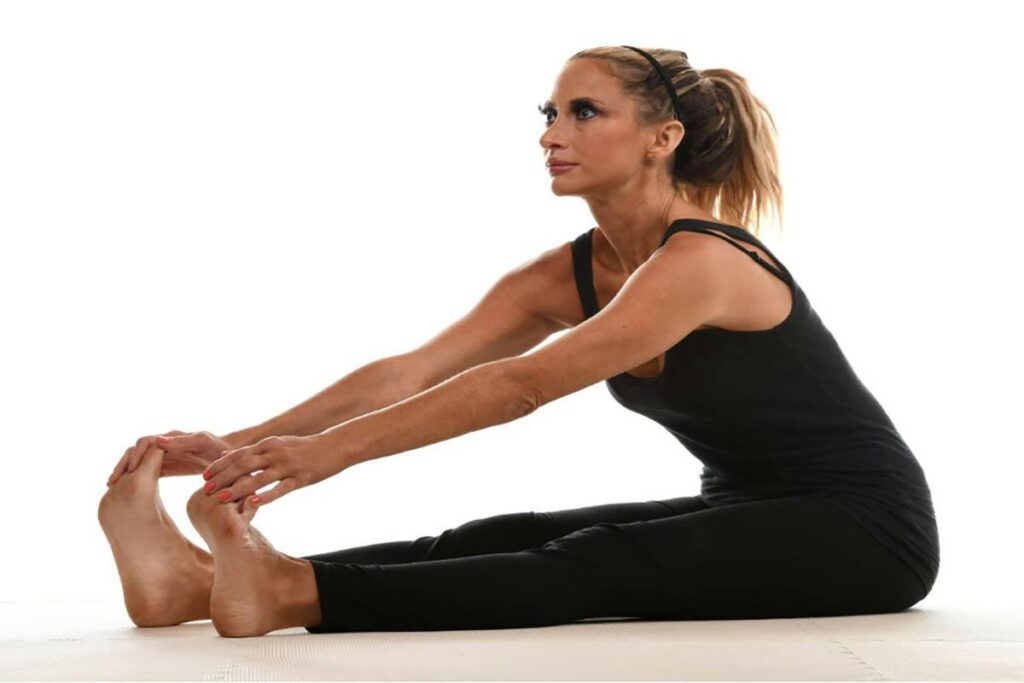
Address tight hamstrings by sitting or standing and reaching towards your toes. This targeted stretch alleviates stress on the lower back, promoting flexibility and preventing strain.
- Piriformis Stretch:

Target the piriformis muscle by crossing one leg over the other while sitting or lying down. This stretch relieves pressure on the sciatic nerve, a common contributor to back pain.
- Hip Flexor Stretch:
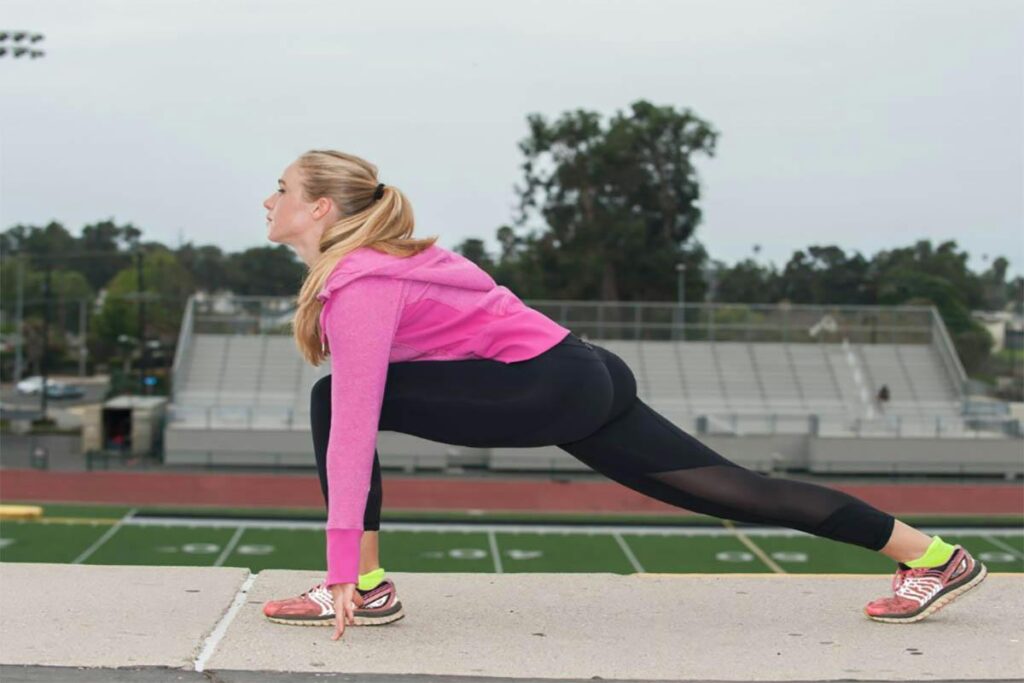
Maintain hip flexibility by lunging forward with one foot while keeping the back leg extended. This stretch ensures a well-balanced and pain-free CrossFit experience by focusing on the hip flexors.
- Thoracic Extension Stretch:
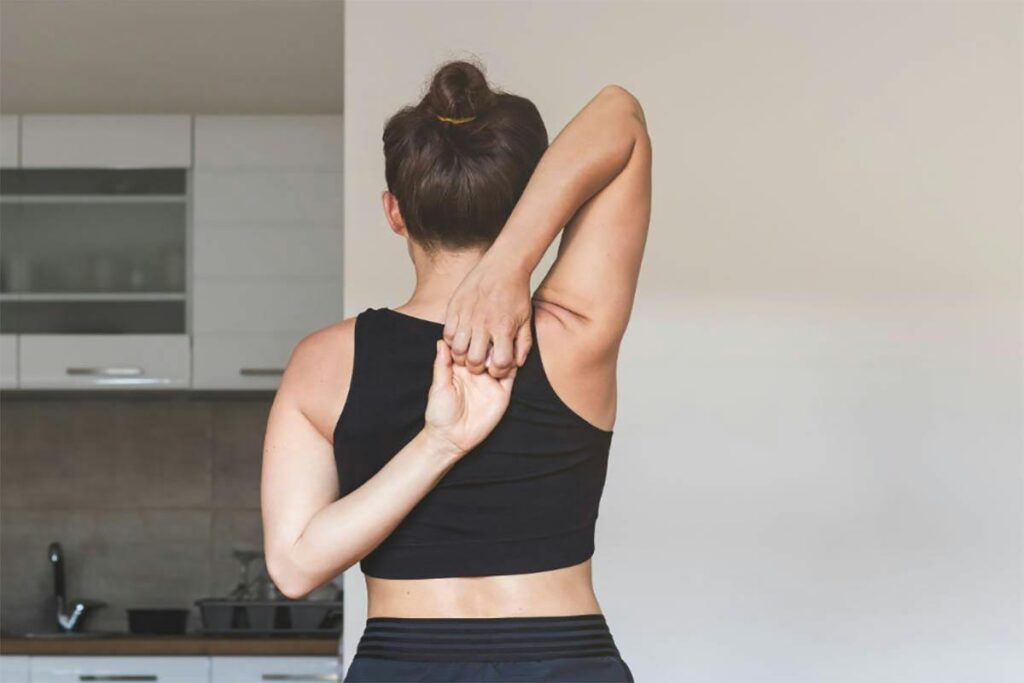
Enhance thoracic mobility by interlocking your hands behind your back and lifting them gently. This stretch promotes a healthier spine and reduces strain on the lower back.
- Side Body Stretch:

Release tension along your sides by reaching one arm overhead while bending to the opposite side. This stretch provides comprehensive relief to your back muscles, promoting flexibility and comfort.
Incorporating these stretches into your routine can significantly contribute to preventing back pain during CrossFit. Ensure proper form and take your time with each stretch to maximize their effectiveness.
Treatment for Back pain from CrossFit with Physical Therapy
When preventive measures fall short, CrossFitters need physical therapy for targeted treatment. Explore the role of physical therapy, including personalized care, rehabilitation, and the emphasis on your posture improvement. This collaborative approach ensures immediate relief while fostering long-term benefits for a healthier, pain-free CrossFit experience.
Ready to enhance your CrossFit journey? Contact The Movement Schopp today to discover how our physical therapists’ specialized services can complement your physical therapy, supporting your fitness goals and ensuring optimal well-being. Embrace a proactive approach to your health and transform your CrossFit experience with expert guidance from The Movement Shop.
Conclusion
In conclusion, CrossFit can be a transformative fitness journey, but like any rigorous exercise program, it requires careful consideration and self-awareness. By understanding the potential risks, incorporating preventive measures, and seeking professional guidance when needed, you can enjoy the benefits of CrossFit while minimizing the risk of back pain.
FAQs
Q1: Can I do CrossFit if I have a history of back pain?
A1: Absolutely, but it’s crucial to consult with a healthcare professional or a qualified CrossFit trainer to personalize your workouts based on your specific needs and limitations.
Q2: Is it normal to experience soreness after a CrossFit workout?
A2: Yes, some soreness is normal, but persistent or acute pain should be addressed with a healthcare professional.
Q3: How often should I incorporate physical therapy into my CrossFit routine?
A3: The frequency of physical therapy sessions depends on the severity of your back pain, especially when dealing with lower back pain in CrossFit. Consult with a healthcare professional to determine an appropriate treatment plan.


